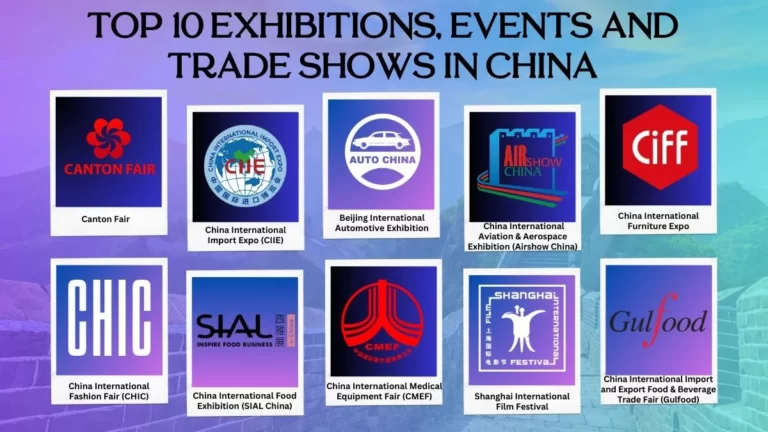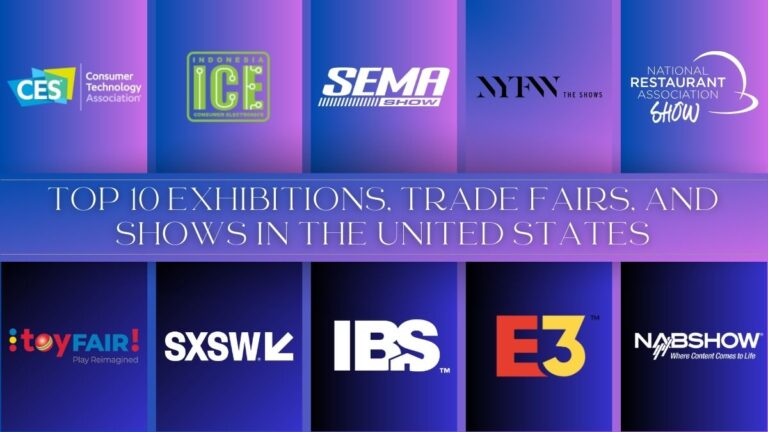Introduction:
The Future of Immersive Events: Embracing Experiential Exhibitions
Immersive events and experiential exhibitions have become the driving force behind the future of event marketing. These captivating and interactive experiences have revolutionized the way brands connect with their audiences, focusing on creating memorable and engaging moments. Experiential exhibitions have taken event engagement to new heights with the rapid advancement of emerging technologies such as augmented reality, virtual reality, and artificial intelligence. Through immersive storytelling and cutting-edge interactive technology, attendees are transported into multi-sensory realms, allowing them to experience the brand’s message and values truly. Combining innovative exhibition concepts, customized event experiences, and personalized event journeys ensures that each attendee feels a deep emotional connection.
Moreover, forward-thinking brands have embraced sustainability and eco-friendly event practices, incorporating interactive exhibits and captivating visuals while prioritizing sustainability to create a lasting impact. By leveraging experiential exhibitions, businesses can differentiate, enhance brand recognition, and establish a strong connection with their target audience, resulting in memorable and impactful event experiences. In recent years, traditional exhibitions have undergone a remarkable transformation as organizers embrace the concept of experiential exhibitions. These innovative events go beyond the conventional static displays to create immersive and interactive experiences for attendees. By integrating cutting-edge technology, art installations, and interactive elements, experiential exhibitions have captured the hearts of both participants and organizers. In this blog, we will explore the growing trend of experiential exhibitions, their benefits, and their crucial role in the future of event marketing.
1. The Rise of Experiential Exhibitions:
The rise of experiential exhibitions has transformed the landscape of immersive events, redefining how brands engage with their audience and amplify their message through event marketing. These interactive experiences have become a powerful tool for brand differentiation, captivating attendees and leaving a lasting impression. With the integration of emerging technologies like augmented reality, virtual reality, and artificial intelligence, experiential exhibitions have taken event engagement to unprecedented levels. Immersive storytelling combined with cutting-edge interactive technology creates multi-sensory experiences, transporting participants into extraordinary worlds and delivering an unforgettable event journey. The appeal of engaging event marketing lies in its ability to create memorable experiences, where attendees are immersed in innovative exhibition concepts, surrounded by cutting-edge displays, and transported through virtual experiences or immersive art installations. Technological advancements continue to drive the industry forward, enabling personalized event journeys and customized event experiences that create a profound emotional connection with attendees.
Furthermore, sustainability has taken a significant role in exhibitions, as eco-friendly event practices are integrated alongside interactive exhibits and captivating visuals, reminding brands of their environmental responsibility. The success of experiential shows lies in their ability to generate brand recognition through authentic and immersive experiences, fostering a sense of personalization while promoting sustainability in an increasingly conscious world. Experiential exhibitions have experienced a meteoric rise in popularity thanks to the increasing demand for unique and memorable event experiences. These exhibitions emphasize engagement, interaction, and creating a multi-sensory environment that evokes emotions and leaves a lasting impression. By blending entertainment, education, and immersive storytelling, experiential exhibitions surpass traditional exhibitions and offer a more dynamic and captivating experience.
2. Benefits of Embracing Experiential Exhibitions:
2.1 Enhanced Attendee Engagement:
Experiential exhibitions and immersive events have completely transformed attendee engagement in event marketing. Through interactive experiences and the incorporation of emerging technologies like augmented reality, virtual reality, and artificial intelligence, event organizers can create unparalleled levels of engagement. Attendees are no longer passive observers but active participants in the event experience, fostering a connection with the brand and its offerings. Combined with cutting-edge interactive technology, immersive storytelling techniques create multi-sensory experiences that captivate the senses and transport attendees to a different world. Innovative exhibition concepts and customized event experiences use personalized event journeys, leaving a lasting impact on each participant.
Furthermore, sustainability and eco-friendly event practices have become integral in creating immersive exhibits and engaging content, showcasing a brand’s commitment to the environment. By incorporating interactive elements in events, such as exhibits and captivating visuals, brands can forge emotional connections with attendees, enhancing brand recognition and a memorable event experience. Experiential exhibitions break the barriers of passive participation by allowing attendees to engage with the exhibits actively. Through hands-on activities, simulations, and virtual reality experiences, attendees become active participants rather than bystanders. This level of engagement fosters a deeper connection between the event and the attendees, resulting in greater brand recognition and loyalty.
2.2 Memorability and Shareability:
Experiential exhibitions are compelling and memorable experiences that leave a lasting impression on attendees. With their interactive and immersive nature, attendees are more likely to remember the event and share their experiences with others through word-of-mouth, social media, and online reviews. This viral effect dramatically increases the reach and visibility of the event, attracting more visitors and generating higher traffic. Two key factors are crucial when creating successful immersive events and experiential exhibitions: memorability and shareability. With event engagement at the heart of every experience, organizers strive to provide multi-sensory experiences that captivate attendees and create lasting memories. Through innovative exhibition concepts and cutting-edge displays, events now offer virtual experiences and immersive art installations that push the boundaries of imagination. Technological advancements continue to shape the landscape, allowing for personalized event journeys and customized experiences that resonate deeply with attendees. Incorporating sustainability and eco-friendly practices demonstrates a brand’s commitment to the environment and adds value to the event, appealing to conscious consumers. Organizations foster an emotional connection with participants by incorporating interactive exhibits, ensuring a memorable event experience. Captivating visuals takes center stage, further elevating the brand’s recognition and shareability through social media and word-of-mouth. In an increasingly competitive market, personalization and sustainability have become defining factors for successful immersive events and experiential exhibitions, making them memorable for attendees and the broader audience.
2.3 Brand Differentiation:
In the ever-evolving business world, brand differentiation has become a pivotal strategy for companies aiming to carve out a unique identity. Through event engagement and the creation of multi-sensory experiences, brands can effectively captivate and engage their audience, leaving an indelible mark. Leveraging engaging event marketing tactics, brands can create memorable event experiences that resonate with attendees long after the event concludes. By embracing innovative exhibition concepts and cutting-edge displays, brands can transcend traditional boundaries and offer truly immersive and spectacular experiences. The integration of virtual experiences and immersive art installations, bolstered by technological advancements in the events industry, further enhances brand differentiation by delivering unforgettable encounters for attendees. Personalized event journeys and customized experiences enable brands to forge deeper connections with individuals, fostering a sense of loyalty and affinity. Sustainability in exhibitions has also emerged as a crucial component of brand differentiation as consumers increasingly value eco-friendly event practices. Incorporating interactive exhibits and elements within events cultivates emotional connections, making the experience more captivating and memorable.
Furthermore, captivating visuals enhance brand recognition through events, leaving a lasting impression on attendees. Ultimately, brand differentiation through events necessitates a fusion of personalization, sustainability, and engaging elements, contributing to a truly distinctive and remarkable experience. In today’s crowded marketplace, standing out from the competition is crucial. Experiential exhibitions provide a unique opportunity for brands to differentiate themselves by offering an immersive environment that reflects their brand personality and values. By incorporating interactive technology, captivating visuals, and sensory elements, brands can communicate their message more impactfully and memorable, setting themselves apart from competitors.
3. The Future of Experiential Exhibitions:
3.1 Technological Innovations:
Technological innovations have revolutionized the landscape of events, offering endless possibilities for event engagement and creating multi-sensory experiences that leave attendees in awe. With engaging event marketing strategies, brands can strive to provide memorable event experiences that stand out. This can be achieved through innovative exhibition concepts, where cutting-edge displays and virtual experiences transport attendees into remarkable worlds. Immersive art installations, made possible through technological advancements in the events industry, create captivating environments that awaken the senses and ignite the imagination. Personalized event journeys and customized experiences leverage technology to tailor each attendee’s experience, making them feel seen and valued. Integrating sustainability in exhibitions is also made easier by technological solutions, enabling eco-friendly event practices that resonate with environmentally conscious attendees. Interactive exhibits and elements enhance the event experience, fostering emotional connections between attendees and the brand. Captivating visuals play a crucial role in brand recognition through events as they leave a lasting impression, solidifying the brand identity in attendees’ minds. The culmination of these technological innovations fuels the transformation of events, providing opportunities for personalization and sustainability and creating truly remarkable experiences. The future of experiential exhibitions lies in the integration of emerging technologies such as augmented reality (AR), virtual reality (VR), and artificial intelligence (AI). These technologies will enhance the immersive experience by creating realistic simulations, personalized interactions, and responsive environments. Additionally, incorporating data analytics and real-time feedback mechanisms will enable organizers to tailor the exhibition experience to individual preferences, ensuring maximum engagement.
3.2 Personalization and Customization:
Event organizers strive to create experiences catering to each attendee in today’s highly personalized world. Personalization and customization have become key strategies to enhance event engagement and deliver memorable experiences. Through the implementation of innovative exhibition concepts and cutting-edge displays, event organizers can captivate attendees with multi-sensory experiences that leave a lasting impression. Technological advancements in events have opened up a wide range of possibilities, allowing for personalized event journeys tailored to the preferences and interests of each participant. Customized event experiences provide attendees with exclusivity, making them feel valued and appreciated.
Additionally, exhibition sustainability has gained significant importance, pushing event organizers to adopt eco-friendly practices that align with attendees’ environmental values. Interactive exhibits and elements further elevate the personalization and customization aspects of events, fostering emotional connections with attendees and enhancing their overall engagement. Captivating visuals play a crucial role in brand recognition through events, leaving a lasting imprint on attendees’ minds. Ultimately, successfully integrating personalization, customization, and sustainability creates a unique event experience that resonates deeply with attendees. Experiential exhibitions will increasingly focus on providing personalized and customized experiences for attendees. By leveraging data analytics and attendee preferences, event organizers can curate an exhibition journey that aligns with the interests and needs of each visitor. This personalization creates a sense of exclusivity and enhances attendee satisfaction, generating positive word-of-mouth and encouraging repeat visits.
3.3 Integration of Sustainability:
As the world focuses more on environmental responsibility, integrating sustainability into events has become essential to event planning. Event engagement goes hand in hand with promoting sustainability, as attendees are increasingly drawn to experiences that align with their eco-conscious values. By embracing innovative and eco-friendly practices, event organizers create memorable experiences that captivate attendees and minimize environmental impact. Event planners can showcase the possibilities of sustainability by implementing multi-sensory experiences, such as immersive art installations and cutting-edge displays. Technological advancements in events play a significant role in this integration, enabling virtual experiences that reduce the need for physical resources. Personalized event journeys and customized experiences can also contribute to sustainability by minimizing waste and optimizing resource allocation. Interactive exhibits and event elements allow attendees to engage in sustainable practices, fostering an emotional connection with the environmental cause. Captivating event visuals can feature sustainable materials and eco-friendly designs, reinforcing the message of sustainability to attendees. Integrating sustainability in exhibitions enhances brand recognition and resonates with attendees intensely, contributing to a more sustainable future. With the growing emphasis on sustainability, experiential trade shows will be instrumental in spreading awareness and promoting eco-friendly practices. By incorporating renewable energy sources, upcycled materials, and eco-conscious exhibit designs, organizers can inspire attendees to adopt sustainable behaviors. Moreover, exhibiting brands can showcase their commitment to environmental responsibility, appealing to growing environmentally-conscious consumers.
Conclusion:
In conclusion, embracing experiential exhibitions is vital for the future of immersive events and event marketing. These interactive experiences, powered by emerging technologies such as augmented reality, virtual reality, and artificial intelligence, have revolutionized how brands engage with their audiences and differentiate themselves in a competitive market. Through immersive storytelling, cutting-edge displays, and multi-sensory experiences, attendees are transported into personalized event journeys that leave a lasting impact. Incorporating sustainability and eco-friendly practices further enhances the value of experiential exhibitions, appealing to environmentally conscious consumers. By creating interactive exhibits with captivating visuals, brands can forge emotional connections with their attendees, leading to heightened event engagement and increased brand recognition. As we move forward, businesses must leverage technological advancements, embrace personalization, and prioritize sustainability to stay at the forefront of innovative exhibition concepts and deliver memorable event experiences that captivate audiences. As the demand for unique and immersive experiences continues to rise, embracing experiential exhibitions is essential to successful event marketing. The blend of technology, interactivity, and emotional storytelling creates a memorable and engaging environment that captivates attendees and increases brand exposure. By staying ahead of technological advancements and leveraging personalization, the future of experiential exhibitions is promising, offering limitless possibilities for both organizers and attendees.











